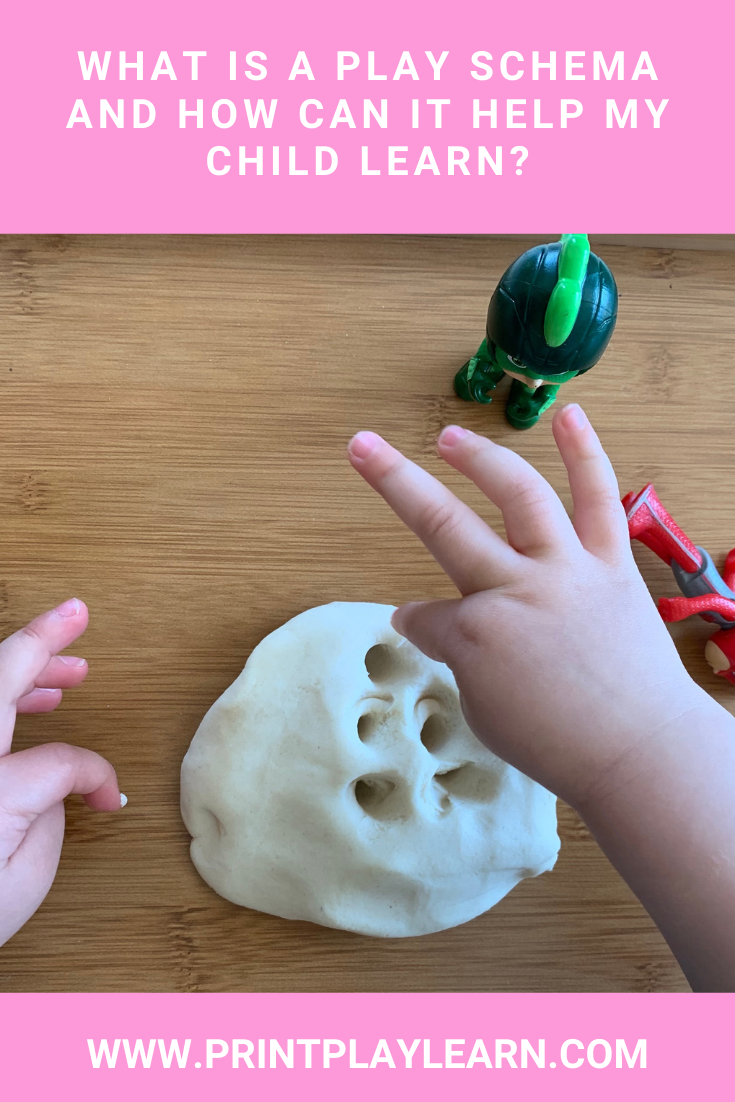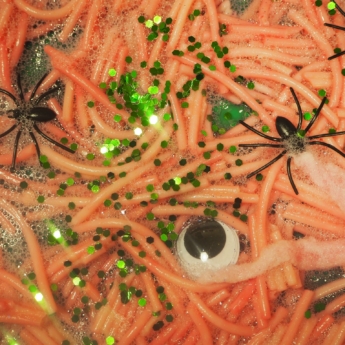Have you ever heard the term ‘schema’ and wondered what exactly it is? Today I’m going to share more about what play schemas are and how they can help you to help your child learn most effectively – and have fun while they’re at it!
What is a schema?
Schemas are described as patterns of repeated behaviours our children perform, allowing them to explore and express developing ideas through their play and exploration of the world around them. These repetitive actions allow our children to construct meaning in what they’re doing, providing them with hands-on feedback helps them problem solve, predict, imagine, and develop independent thinking.
By having a basic understanding of the different types of schemas and which one your child most engages with, you can best plan and support their learning and keep them engaged in a way they feel confident and excited about!
How to spot a schema and use it to make learning fun
The common types of schema and how to spot them are below, with some tips on activities to help support their play and boost their learning:
Trajectory
What you’ll notice: Children like to move their arms, legs and bodies in horizontal or vertical lines – pushing, kicking, dropping objects or putting things in and out of containers.
Things to play:
- Blow feathers or paper upwards
- Make paper planes
- Drop objects of different sizes and shapes
- Make kites and fly them
- Chase bubbles
- Throw balls at a target
- Drip paint down paper on a wall
- Play with yo-yos
- Push toy cars up a vertical surface
Rotation
What you’ll notice: Children like to turn and rotate themselves or objects – spinning, twisting, rolling, turning objects or their bodies. They love running, getting dizzy, riding bikes or twisting ribbons & scarves.
Things to play:
- Play turning cogs
- Explore spiral shapes like snail shells
- Mix and stir paints and pretend potions
- Make and blow paper windmills
- Whisk water or cake mix in a bowl
- Look out for different shape wheels
- Draw circles and spirals
- Play Hula Hoop
- Roll sausages out of playdough
Enclosing
What you’ll notice: Children like to join lines or building structures to form an enclosure. They might build walls or fences, draw boxes or borders, or arrange food around the edges of their plates.
Things to play:
- Create dens and domes from sheets
- Put fabric doors onto a tunnel
- Make playdough caves
- Create tunnels for cars in soil and sand
- Build a tent with blankets and big cushion
- Play in big cardboard boxes
- Frame art with lolly sticks or twigs
- Make fences from lego or building blocks
Enveloping
What you’ll notice: Children will often cover objects or themselves with different materials. They like to hide, wear hats, scarves, and playing in dens or under furniture. They may also like wrapping things up or painting over things.
Things to play:
- Build dens
- Wrap objects in paper or fabric
- Play post office and send letters
- Wrap up in scarves and blankets
- Play with nesting dolls and shape sorters
- Make glove puppets
- Post things through cardboard boxes and tubes
- Cover balloons with paper mache
Transporting
What you’ll notice: Children like to move things from place to place! They will carry things in buckets, pockets, wheelbarrows, bags and other vehicles to move things about.
Things to play:
- Play with diggers, trolleys and big toy cars
- Watch twigs float down streams
- Fill boxes with toys and move them around
- Use syringes in water to fill and empty
- Play with cups and pans in water
- Play with buckets and sand
- Fill cups and pots with sensory materials like rice
- Role play moving house and packing things up
Connecting
What you’ll notice: Children will enjoy connecting things together. Rope, tape ribbon, building blocks. They like to fasten fabrics and suspend things from furniture or outdoors.
Things to play:
- Make paper chains
- Use pipes and funnels to play with water
- Play with pipe cleaners
- Thread string through pasta
- Build a train track
- Try lots of different construction toys
- Make a chalk trail outside
- Model recycling with tape and glue
Positioning
What you’ll notice: Children will be seen positioning, arranging and ordering objects. They like to have things in an exact place and often line up and sort things by size, colour or shape.
Things to play:
- Stacking objects and blocks
- Line up toys
- Balance objects on beams or ledges
- Play fuzzy felt or peg boards
- Play hide and seek or hiding toys
- Make long lines of toy cars or animals
Orientation
What you’ll note: Children look at things from different viewpoints. They like to hang upside down, look through their legs, and climb, roll or stand on a ledge to see things from a higher point of view.
Things to play:
- Use binoculars, kaleidoscopes and mirrors to see things differently
- Encourage climbing, rolling and twisting
- Put mirrors on the floor to see the ceiling or clouds
- Make peep holes in paper or fabric
- Cut windows in cardboard boxes for them to crawl through
- Sit in front of a mirror and do self portraits
Have you spotted which schema your child has? It’s always exciting to notice and support them to have more fun with it! Why not share a photo of your child engaging with their schema over on Instagram, we’d love to celebrate their play!

